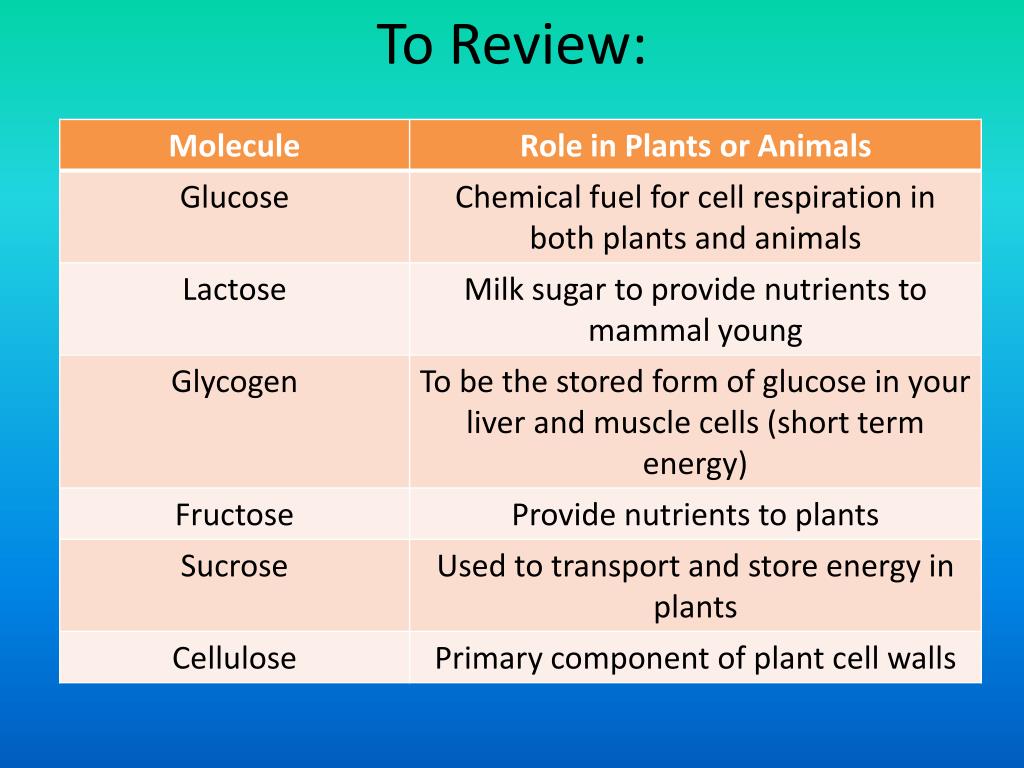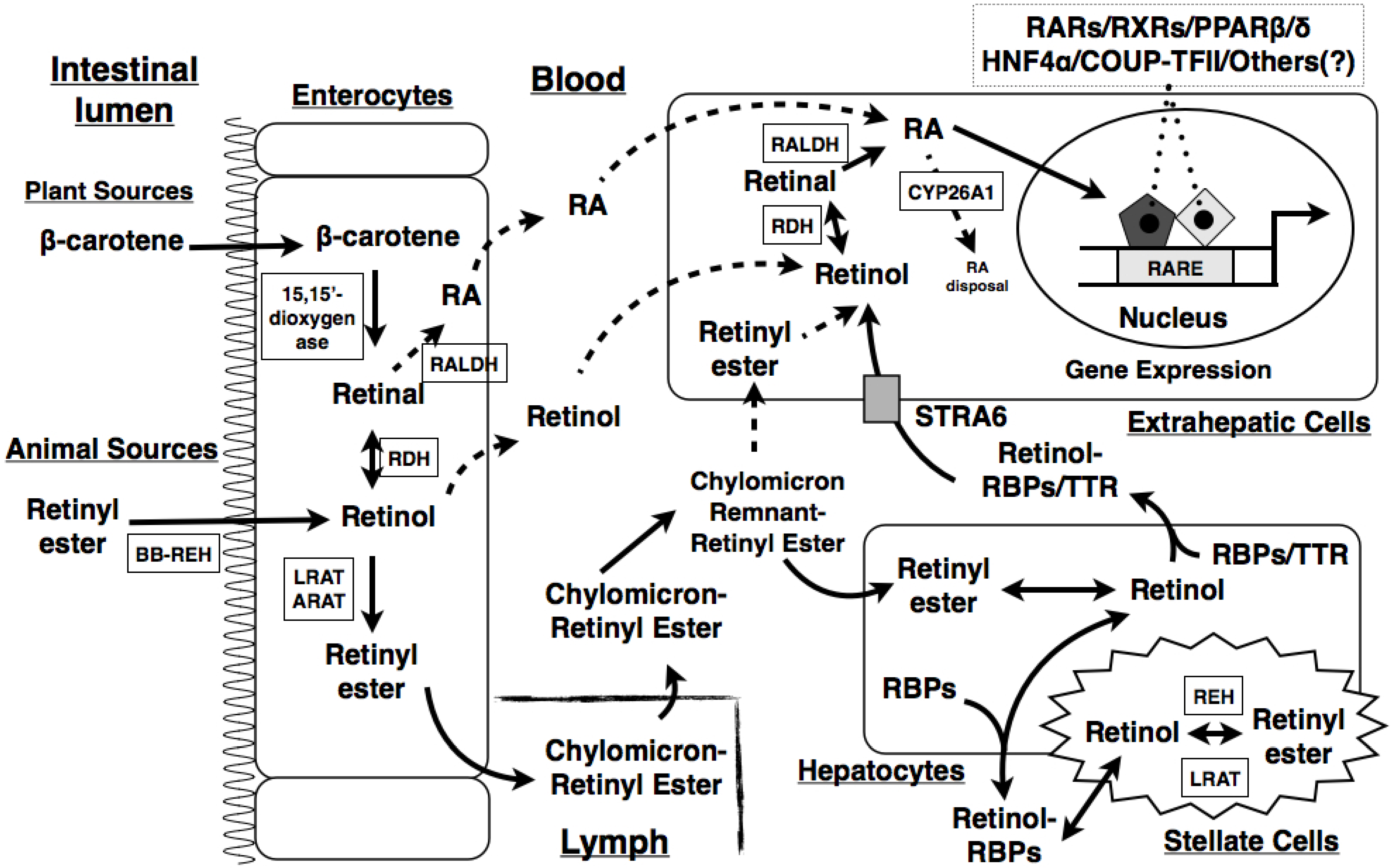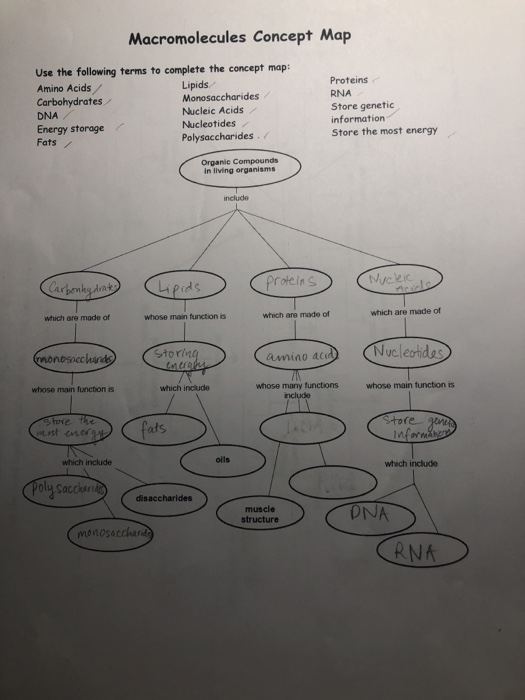Concept Review Carbohydrates Fats And Proteins. Caused by attractions between R groups of amino acids c. Despite extensive experimental studies on total starvation, many of the findings relating to protein, fat (plus ketone body), and carbohydrate metabolism remain confusing, although they become more consistent when considered in relation to the degree of initial obesity..Protein is vital to the optimal growth and development of kids. The three macronutrients are protein, fat and carbohydrates and are what fuel the body and provide energy. No matter what one's health and/or fitness goals are, it is important to incorporate all macronutrients within the diet.

Weight loss occurred whether or not the diet was accompanied by increased protein or fat.
When given the carbohydrates, fats, proteins in a food item, be able to determine the total calorie content of the food.
Fats that contain mostly trans fats and saturated fats are solid at room temperature. Key Concepts In addition to carbohydrates, fats and proteins are the other two macronutrients required by the human body. Evidence suggests that TEF is increased by larger meal sizes (as opposed to frequent small meals), intake of carbohydrate and protein (as opposed to dietary fat), and low-fat plant-based diets. Balancing the calories that we take in with those that we burn every day can help us maintain, gain, or lose weight. Fats, a subgroup of lipids, are also known as triglycerides, meaning their molecules are made from one molecule of glycerol and three fatty acids. Despite extensive experimental studies on total starvation, many of the findings relating to protein, fat (plus ketone body), and carbohydrate metabolism remain confusing, although they become more consistent when considered in relation to the degree of initial obesity. Ignore the moustache ;) Describe how carbohydrates, fats, and proteins are broken down during digestion. We have said that animals obtain chemical energy from the food—carbohydrates, fats, and proteins—they eat through reactions defined collectively as catabolism. Because fats are such an efficient form of energy, the body stores any excess energy as fat. Continued folding of polypeptide beyond secondary structure b. Caused by attractions between R groups of amino acids c. Vitamins A diet rich in vegetable, fruits, and lean proteins should provide a person with plenty of. The function of the Protein depends on its shape Carbohydrates, protein, fat, and alcohol are all sources of calories in the diet.

Concept Review Carbohydrates Fats And Proteins. Proteins differs from carbohydrates and fats because of the presence of nitrogen. Made of two or more folded polypeptides joined together c..Replace saturated and trans fats with these two types of healthier fats while keeping total fat intake within the recommended. What do carbohydrates convert into for our bodies to use it Glucose What category of carbohydrates is made up of single or double chemical units, easy to digest and supply short lived energy To describe how carbohydrates, fats, and proteins are broken down during digestion. Key Concepts In addition to carbohydrates, fats and proteins are the other two macronutrients required by the human body.
Macronutrients are the fundamental building blocks of the foods we eat. Caused by attractions between R groups of amino acids c. Highest level of protein structure b. Because fats are such an efficient form of energy, the body stores any excess energy as fat. No matter what one's health and/or fitness goals are, it is important to incorporate all macronutrients within the diet. By comparison, traditional high‐carbohydrate, low‐fat regimens showed significant weight loss as well. Carbohydrates(Jackson) Soluble Fibre Insoluble Fibre Resistant Starch Fibre (Grace) Essential Amino Acids Non-essential Amino Acids Amino Acids (Jamee) Complete Proteins Incomplete Proteins Protein (Dean) Saturated fat (Jill) Trans Fat Monounsaturated fat Polyunsaturated Fat Unsaturated Fat (Alysha) Lipids (fats) (Damien) Macronutrients. Proteins PART Il Place an "S" in front of each of the following simple carbohydrates. Vitamins A diet rich in vegetable, fruits, and lean proteins should provide a person with plenty of. Made of two or more folded polypeptides joined together c. What do carbohydrates convert into for our bodies to use it Glucose What category of carbohydrates is made up of single or double chemical units, easy to digest and supply short lived energy To describe how carbohydrates, fats, and proteins are broken down during digestion. We have said that animals obtain chemical energy from the food—carbohydrates, fats, and proteins—they eat through reactions defined collectively as catabolism. Consists of the elements : S, P, O, N, C, H.
Concept Review Carbohydrates Fats And Proteins. These macronutrients can all be part of a healthy diet. They are the building blocks of all protein molecules are amino acids..Macronutrients are the fundamental building blocks of the foods we eat. Learn vocabulary, terms, and more with flashcards, games, and other study tools. Information for diabetics about how to balance the three nutritional elements in their diet: fats, proteins, and carbohydrates.
Despite extensive experimental studies on total starvation, many of the findings relating to protein, fat (plus ketone body), and carbohydrate metabolism remain confusing, although they become more consistent when considered in relation to the degree of initial obesity. The Nutrition for Nursing video tutorial series is inten. Learn some tips for fitting carbs in your diet. Replace saturated and trans fats with these two types of healthier fats while keeping total fat intake within the recommended. What do carbohydrates convert into for our bodies to use it Glucose What category of carbohydrates is made up of single or double chemical units, easy to digest and supply short lived energy To describe how carbohydrates, fats, and proteins are broken down during digestion. Phytochemical and Zoochemicals, define and be able to identify The components of nutritional assessment. Macronutrients are the fundamental building blocks of the foods we eat. These macronutrients can all be part of a healthy diet. Balancing the calories that we take in with those that we burn every day can help us maintain, gain, or lose weight. These macromolecules are broken down and absorbed into the body at different rates and into specific forms as they travel through the organs in the digestive system. Balancing carbs, protein, and fat Three nutrients — carbohydrate, protein, and fat — contain calories that your body uses for energy. Fats are the slowest source of energy but the most energy-efficient form of food. Fats that contain mostly trans fats and saturated fats are solid at room temperature.

Concept Review Carbohydrates Fats And Proteins. Proteins differs from carbohydrates and fats because of the presence of nitrogen. Because fats are such an efficient form of energy, the body stores any excess energy as fat..Macronutrients are the fundamental building blocks of the foods we eat. Learn some tips for fitting carbs in your diet. Fats that contain mostly trans fats and saturated fats are solid at room temperature.
Continued folding of polypeptide beyond secondary structure b. Highest level of protein structure b. Protein is vital to the optimal growth and development of kids. Cathy Parkes RN, covers Nutrition for Nursing: Macronutrients - Carbohydrates, Protein, Fats/Lipids. The three macronutrients are protein, fat and carbohydrates and are what fuel the body and provide energy. These macromolecules are broken down and absorbed into the body at different rates and into specific forms as they travel through the organs in the digestive system. Phytochemical and Zoochemicals, define and be able to identify The components of nutritional assessment. Learn some tips for fitting carbs in your diet. Interrelationship Among Proteins Carbohydrates Proteins And Fats Relationship Between Carbohydrate Protein And Fat Metabolism Area Charts Because fats are such an efficient form of energy, the body stores any excess energy as fat. Proteins PART Il Place an "S" in front of each of the following simple carbohydrates. Balancing carbs, protein, and fat Three nutrients — carbohydrate, protein, and fat — contain calories that your body uses for energy. They are the building blocks of all protein molecules are amino acids.

Concept Review Carbohydrates Fats And Proteins. Balancing the calories that we take in with those that we burn every day can help us maintain, gain, or lose weight. This approach is based on two assumptions: that dietary carbohydrates and fats do not contain nitrogen, and that nearly all of the nitrogen in the diet is present as amino acids in proteins..They are the building blocks of all protein molecules are amino acids. Consists of the elements : S, P, O, N, C, H. The three macronutrients are protein, fat and carbohydrates and are what fuel the body and provide energy.
Fats in the body serve mainly as an energy storage system. Continued folding of polypeptide beyond secondary structure b. Carbohydrates(Jackson) Soluble Fibre Insoluble Fibre Resistant Starch Fibre (Grace) Essential Amino Acids Non-essential Amino Acids Amino Acids (Jamee) Complete Proteins Incomplete Proteins Protein (Dean) Saturated fat (Jill) Trans Fat Monounsaturated fat Polyunsaturated Fat Unsaturated Fat (Alysha) Lipids (fats) (Damien) Macronutrients. Key Concepts In addition to carbohydrates, fats and proteins are the other two macronutrients required by the human body. The three macronutrients are protein, fat and carbohydrates and are what fuel the body and provide energy. They are the building blocks of all protein molecules are amino acids. What do carbohydrates convert into for our bodies to use it Glucose What category of carbohydrates is made up of single or double chemical units, easy to digest and supply short lived energy To describe how carbohydrates, fats, and proteins are broken down during digestion. Consists of the elements : S, P, O, N, C, H. Learn some tips for fitting carbs in your diet. Cathy Parkes RN, covers Nutrition for Nursing: Macronutrients - Carbohydrates, Protein, Fats/Lipids. Proteins PART Il Place an "S" in front of each of the following simple carbohydrates. Macronutrients are the fundamental building blocks of the foods we eat. Fats are the slowest source of energy but the most energy-efficient form of food.

Concept Review Carbohydrates Fats And Proteins. By comparison, traditional high‐carbohydrate, low‐fat regimens showed significant weight loss as well. Vitamins A diet rich in vegetable, fruits, and lean proteins should provide a person with plenty of..We have said that animals obtain chemical energy from the food—carbohydrates, fats, and proteins—they eat through reactions defined collectively as catabolism. Replace saturated and trans fats with these two types of healthier fats while keeping total fat intake within the recommended. Key Concepts In addition to carbohydrates, fats and proteins are the other two macronutrients required by the human body.
By comparison, traditional high‐carbohydrate, low‐fat regimens showed significant weight loss as well. Fats in the body serve mainly as an energy storage system. Balancing carbs, protein, and fat Three nutrients — carbohydrate, protein, and fat — contain calories that your body uses for energy. Learn vocabulary, terms, and more with flashcards, games, and other study tools. Macronutrients are the fundamental building blocks of the foods we eat. Phytochemical and Zoochemicals, define and be able to identify The components of nutritional assessment. Evidence suggests that TEF is increased by larger meal sizes (as opposed to frequent small meals), intake of carbohydrate and protein (as opposed to dietary fat), and low-fat plant-based diets. Protein is vital to the optimal growth and development of kids. Ignore the moustache ;) Describe how carbohydrates, fats, and proteins are broken down during digestion. They are the building blocks of all protein molecules are amino acids. Proteins PART Il Place an "S" in front of each of the following simple carbohydrates. Replace saturated and trans fats with these two types of healthier fats while keeping total fat intake within the recommended. Highest level of protein structure b.

Concept Review Carbohydrates Fats And Proteins. Because fats are such an efficient form of energy, the body stores any excess energy as fat. Balancing carbs, protein, and fat Three nutrients — carbohydrate, protein, and fat — contain calories that your body uses for energy..Consists of the elements : S, P, O, N, C, H. Phytochemical and Zoochemicals, define and be able to identify The components of nutritional assessment. These macromolecules are broken down and absorbed into the body at different rates and into specific forms as they travel through the organs in the digestive system.
Fats in the body serve mainly as an energy storage system. The three macronutrients are protein, fat and carbohydrates and are what fuel the body and provide energy. No matter what one's health and/or fitness goals are, it is important to incorporate all macronutrients within the diet. Because fats are such an efficient form of energy, the body stores any excess energy as fat. Fats, a subgroup of lipids, are also known as triglycerides, meaning their molecules are made from one molecule of glycerol and three fatty acids. Interrelationship Between Carbohydrate Protein Fat A potentially modifiable component of energy expenditure is the thermic effect of food (TEF), the increase in the metabolic rate that occurs after a meal. We have said that animals obtain chemical energy from the food—carbohydrates, fats, and proteins—they eat through reactions defined collectively as catabolism. Phytochemical and Zoochemicals, define and be able to identify The components of nutritional assessment. Key Concepts In addition to carbohydrates, fats and proteins are the other two macronutrients required by the human body. They are the building blocks of all protein molecules are amino acids. The function of the Protein depends on its shape Carbohydrates, protein, fat, and alcohol are all sources of calories in the diet. Made of two or more folded polypeptides joined together c. Replace saturated and trans fats with these two types of healthier fats while keeping total fat intake within the recommended.

Concept Review Carbohydrates Fats And Proteins. Replace saturated and trans fats with these two types of healthier fats while keeping total fat intake within the recommended. Proteins PART Il Place an "S" in front of each of the following simple carbohydrates..No matter what one's health and/or fitness goals are, it is important to incorporate all macronutrients within the diet. The three macronutrients are protein, fat and carbohydrates and are what fuel the body and provide energy. Consists of the elements : S, P, O, N, C, H.



Comments
Post a Comment